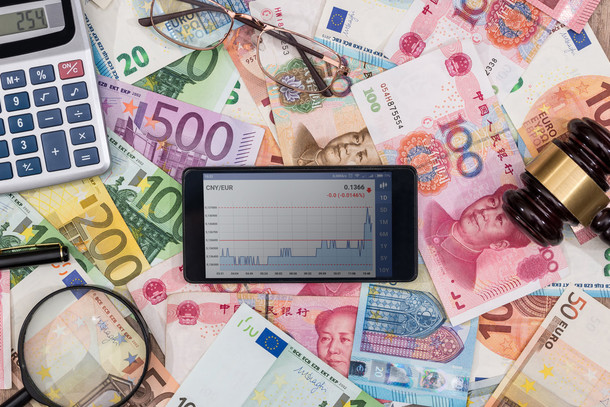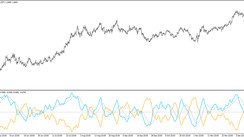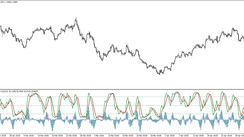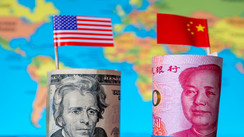The rate of exchange between two currencies that is determined by the market is known as the “nominal” exchange rate.
This is the rate at which we trade and exchange currencies and the one we can easily check by looking at the current Forex market pricing for any particular currency pair.
Although this is the exchange rate that everyone is looking at and referring to, markets are known to often overprice or underprice financial assets, and the same holds true for currencies.
To find out how much a currency pair is over or underpriced and to determine the longer-term fair value of an exchange rate, economists use several different methods by which they can obtain the so-called “real” or effective exchange rates.
Real exchange rates need to be calculated and are often based on economic indicators and additional economic data.
The calculated real exchange rate, although it cannot be used anywhere to exchange actual currencies, acts as a reality check for the nominal exchange rate. Very often when extreme price levels are overshoot exchange rates will return toward the real exchange.
Several different ways of computing real exchange rates are covered in greater detail in the sections below.
Inflation Adjusted Real Exchange Rates
One popular way to assess the real exchange rate for a currency pair is to correct the nominal exchange rate between the two currencies by the relative rates of inflation in the two countries concerned.
This allows to effectively compare what goods and how much of them can be purchased in the two countries with their currencies and therefore determine the real value of the exchange rate.
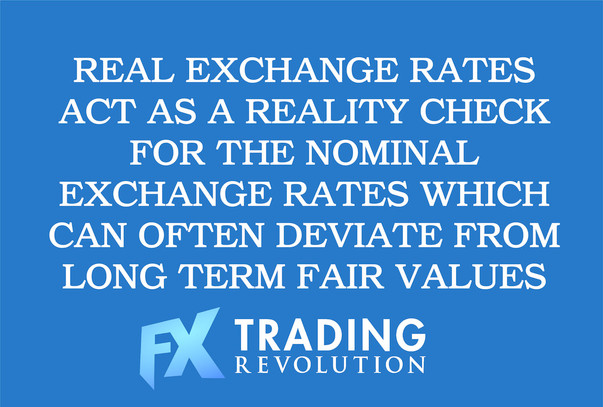
As an example, consider the situation where the country of the base currency is experiencing inflation at a rate of 5%, but the counter currency’s country only has inflation of 2%. In this case, the first country’s currency would have a real exchange rate 3% higher than the second country’s to reflect the difference between the inflation rates. The nominal exchange rate, however, can remain unchanged.
Furthermore, increasing prices will generally increase nominal exchange rates as well since many central banks need to hike benchmark interest rates to counteract inflationary tendencies in the economy they are managing. A higher nominal exchange rate is by nature deflationary and helps to fight inflationary pressures.
In addition, rising interest rates usually make a currency go up in value as international investors’ demand for the currency grows due to the higher yield offered when holding it.
Purchasing Power Parity Real Exchange Rates
Another valuation method for the real exchange rate is purchasing power parity (PPP). This theory assumes that the cost of the same good or a basket of goods should effectively cost the same in two different countries.
Using the PPP definition, you would take the nominal exchange rate and adjust it by the ratio of the price level of a certain product or basket of goods in the foreign economy versus the same items in the domestic economy to obtain the real exchange rate. Most often a basket of goods is best to be used, however, some variations of the PPP method compare the cost of only one product or good.
One famous example is the Big Mac Index which is a very popular method to quickly check the fair value of any currency pair. Essentially, the PPP theory states that if one McDonald's Big Mac costs $4 in the United States, it should also cost $4 elsewhere, like in Europe, in the UK and in Japan.
Essentially, if it costs more, then that particular country’s currency is considered overvalued and if it costs less, then that country’s currency will be viewed as undervalued.
The PPP definition of real exchange rates involves the fundamental idea that the valuation difference seen among the two countries’ currencies has a direct relation to pricing of goods observed in the two respective economies.
Essentially, if goods become cheaper in one country, then people and importers from the other more expensive country will tend to purchase them. This can then affect the exchange rate in favor of the cheaper currency by increasing demand for the cheaper country’s currency relative to the more expensive country’s currency.
Trade-Weighted Real Exchange Rates
To determine a more realistic value of a specific currency, traders and economists use calculated trade-weighted exchange rates. These trade-weighted exchange rates are in the form of an index that tries to capture the value of one country’s currency against a basket of other currencies.
For example, a Trade-Weighted Index or a Trade-Weighted Exchange Rate takes a weighted average of the exchange rates observed for a basket of foreign currencies, with each foreign country’s weight being set to equal its trade share with the home country. There are different variations in calculating trade-weighted exchange rates, most often they are weighted on imports, exports or the total trade between two countries.
Because currencies are always valued in relation to other currencies, the exchange rate against one currency does not always reflect the real strength or weakness of a currency.
To take an example, if EURUSD rises sharply, it may not necessarily be because of Euro strength but rather it may be because of Dollar weakness. A trade-weighted Euro index, however, can give a better perspective on the value of the Euro since it will include a basket of currencies of all the largest EU trading partners.
In this case, if the trade-weighted Euro index rises over a period of time then it can be accurately concluded that the Euro has strengthened during that period.
In essence, this type of effective exchange rate measures the average price of home goods relative to the average price of goods of trading partners, using the share of trade with each country as the weight for that country.
If the trade-weighted index of a currency rises, then that generally means that the currency’s purchasing power increases and it can buy more imports. On the other hand, a falling trade weighted index implies that the currency’s purchasing power has decreased, and so more of the currency is required to purchase the same amount of imported goods.

